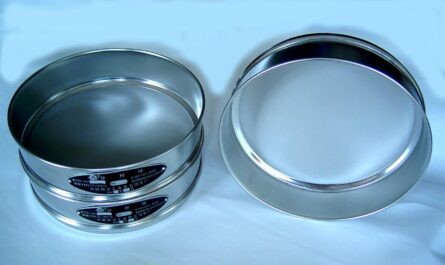Pacemakers: Regulating Abnormal Heart Rhythms
One of the most common and well-known cardiovascular devices are pacemakers. A pacemaker is a small, battery-operated device that is implanted in the chest or abdominal area to help regulate abnormal heart rhythms, known as arrhythmias. Pacemakers help treat arrhythmias such as bradycardia, which causes the heart to beat too slowly, or heart block, which interferes with the heart’s electrical signals.
When the heart’s natural pacemaker, the sinoatrial node, malfunctions, a pacemaker takes over the job of coordinating the heartbeat. Pacemakers work by sending out low-voltage electrical pulses to stimulate the heart muscle and regulate its beating. Modern pacemakers are programmable and can adapt to the body’s needs. They continuously monitor the heart and only provide pulses when the heart’s natural rhythm slows down or becomes erratic. Having a pacemaker significantly improves quality of life by preventing arrhythmia symptoms like dizziness, fatigue and fainting.
Cardiac Resynchronization Therapy: Beating in Sync
For some heart failure patients, the two lower chambers of the heart – the ventricles – do not contract at the same time. This unsynchronized beating, also called dyssynchrony, decreases the heart’s pumping efficiency. Cardiovascular Devices resynchronization therapy (CRT), also known as biventricular pacing, addresses this issue through a special type of pacemaker. Along with the standard right ventricular lead, a CRT device also has an additional lead placed in the left ventricle.
By coordinating the contractions of both ventricles, CRT helps restore a more effective pumping rhythm. This therapy has been shown to improve heart function, relieve heart failure symptoms and reduce the risk of cardiac events like stroke or death in appropriate candidates. CRT devices are increasingly implanted in patients with moderate to severe heart failure who have wide QRS complexes on electrocardiograms, indicating electrical dyssynchrony. They provide significant quality of life gains and prevent future hospitalizations associated with heart failure.
Implantable Cardioverter Defibrillators: Stopping Sudden Cardiac Arrest
Implantable cardioverter defibrillators (ICDs) are lifesaving devices used to treat potentially fatal abnormal heart rhythms called arrhythmias that can lead to sudden cardiac arrest. ICDs are most commonly used in people who are at high risk for ventricular fibrillation or ventricular tachycardia, which are defined as a very fast heart rhythm that starts in the ventricles instead of the sinuses. In ventricular fibrillation, the quivering ventricles cannot pump blood to the body. If not treated within minutes by defibrillation, sudden cardiac arrest leads to death.
ICDs work by continuously monitoring the heart and detecting any abnormal rhythms. When an irregular rhythm is identified, the ICD takes action to restore a normal heart rate. It may deliver low-energy shocks called antitachycardia pacing (ATP) to break faster rhythm like ventricular tachycardia. For ventricular fibrillation, it provides lifesaving defibrillation via higher energy shocks. Modern ICDs also function as pacemakers if the heart rate gets too slow. Implanting ICDs in appropriate candidates can dramatically reduce the risk of sudden cardiac death from arrhythmias. They have become the standard of care for certain high-risk groups.
Coronary Stents: Opening Clogged Pipes
Coronary artery disease is the most common heart disease, affecting millions worldwide. It involves the buildup of fatty plaques inside the coronary arteries that supply blood to the heart. Over time, the plaques can harden and narrow the arteries, restricting blood flow. This is known as stenosis. Placement of coronary stents is a common practice to restore blood flow when arteries become severely blocked.
Stents are tiny mesh tubes made of metal, usually stainless steel or cobalt chromium. During angioplasty, a catheter with an inflatable balloon is inserted into the blocked artery. When the balloon is inflated at the site of stenosis, it compresses the plaque and widens the artery. A stent is then deployed, acting like scaffolding to prop the artery open. Most stents are coated with medications to prevent renarrowing of the artery, also called restenosis. Stenting successfully relieves chest pain in most cases and greatly improves blood flow to the heart muscle. Along with medications, it significantly reduces the risk of a future heart attack compared to balloon angioplasty alone.
Artificial Hearts: Bridging to Transplant with Cardiovascular Devices
For some advanced heart failure patients, transplantation offers the best chance of survival. However, the shortage of donor organs means many need life-saving mechanical circulatory support while waiting for a transplant. Total artificial hearts are designed to completely replace the pumping function of the diseased native heart. Two pioneering devices have gained regulatory approval – the SynCardia temporary Total Artificial Heart and the AbioMed Impella RP.
The SynCardia uses pneumatic blood pumps and is implanted during open heart surgery. It takes over full cardiac output and keeps patients alive until they receive a heart transplant, which typically occurs within 1-2 months. Meanwhile, the Impella RP is a miniaturized heart pump placed via a catheter in the femoral vein, bypassing the need for open surgery. It unloads 50% of the stressed ventricle’s work and provides months of critical support as patients await transplant evaluation. Both devices have enabled high-risk patients to stabilize and get transplant candidates listed who otherwise may not have survived until a donor organ became available. They represent major advances in bridging heart failure patients to the only permanent cure – heart transplantation.
In summary, cardiovascular devices have revolutionized the management of heart disease. From pacemakers to coronary stents and beyond, these innovations save and improve countless lives every day by correcting dangerous rhythm disturbances, improving pumping function, and restoring blood flow to the vital organs. Future developments promise even more targeted and minimally invasive therapies. The rapid progress in this field underscores our growing ability to engineer solutions that repair, replace and enhance the natural functions of the human heart.
*Note:
1. Source: Coherent Market Insights, Public Source, Desk Research
2. We have leveraged AI tools to mine information and compile it.




